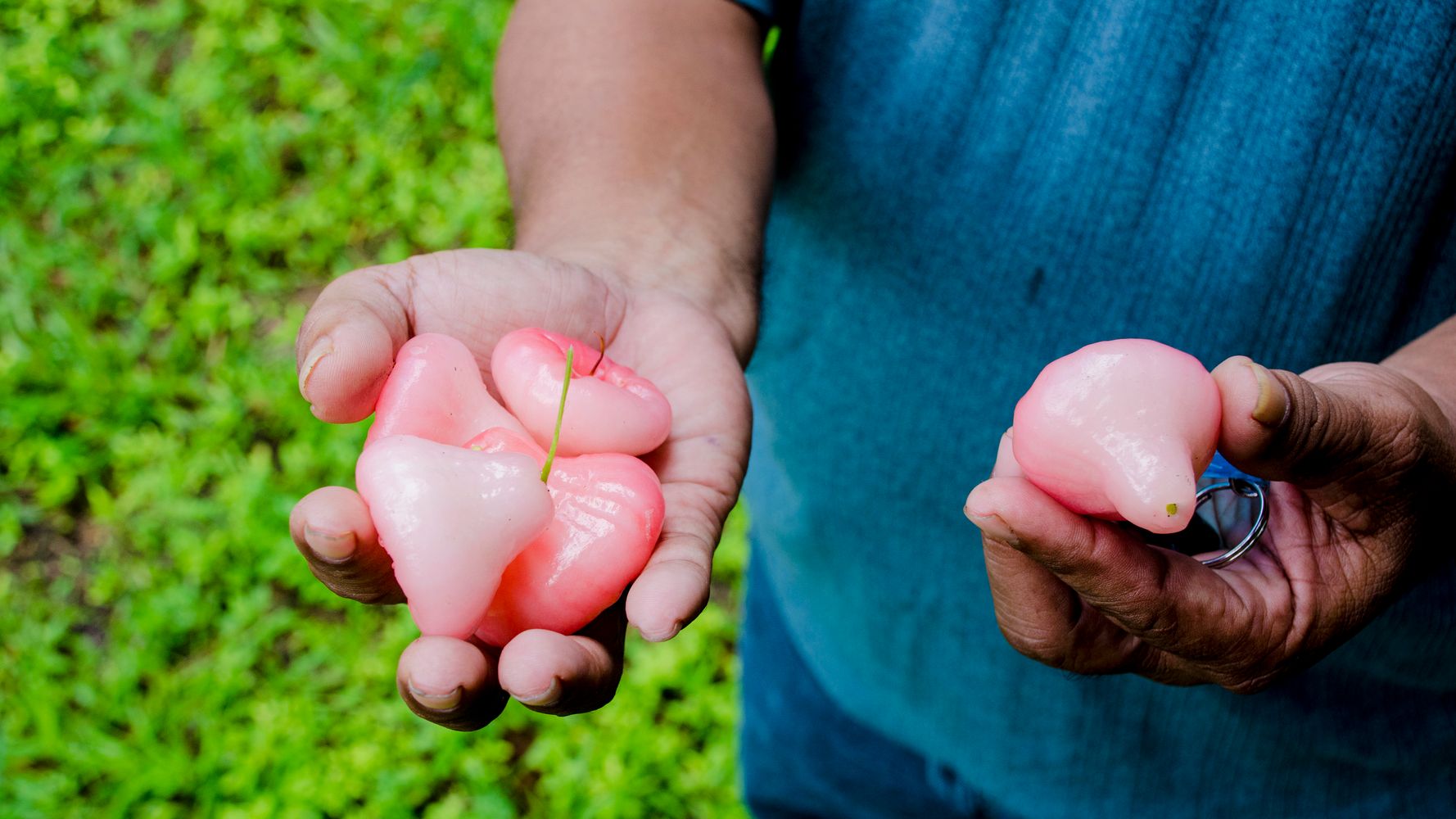LAURA VILLAGE, Marshall Islands — Holding in his hand a bunch of what he called mountain apples, Steve Lepton grinned like a kid with a new toy.
“Oh, it’s good,” he said. “Yesterday I didn’t find any fruit on this one. Wow, this is great. They’re getting red.”
The delicate little fruit is crunchy like an apple and sweet. It’s a popular snack in the Marshall Islands, Lepton told The WorldPost, but kids pickle it with salt and Kool-Aid, which defeats the purpose of eating fruit in the first place.
As the Global Climate and Health Alliance made clear with an announcement on Dec. 5, small and low-lying islands like the Marshalls that are most at risk of climate change also face intense health issues related to a warmer planet. These dangers come from heat stroke and tropical illnesses like dengue fever, the Alliance warned. Hundreds of thousands of people could die.
But health issues not related to climate are a more immediate problem here. Sixty-five percent of people in the Marshall Islands are overweight or obese, according to a 2013 study funded by the National Institutes of Health — slightly less than in the U.S. More than one-third of Marshall Islanders have diabetes, according to the International Diabetes Federation, one of the highest rates in the world. Only two places — Tokelau and Micronesia, both neighbors of the Marshall Islands — have higher rates.
Eating habits here have changed since the old days, when fish and fruit provided all the nutrients humans needed to survive in this paradise. Today, rice, flour and meat are the base of almost every breakfast, lunch and dinner. Almost all of it is imported — at high prices. The Marshall Islands produce no rice, no wheat, no cattle. The diet has contributed to an unhealthy lifestyle.
But Lepton and his colleagues at the Ministry of Resources and Development are trying to change that with a return to traditional agriculture. It’s not easy to farm in the Marshalls — the soil is sandy and its organic content is low. But the climate is warm and fruit trees are abundant. And with help from modern science and crops that can resist drought and heat, farming may become possible on a larger scale. This return to the land may contribute to healthier lifestyles, even as droughts and rising seas threaten the islands’ sensitive soil.
Climate change is likely to further endanger indigenous sources of food that the government is promoting. Rising seas threaten farms and the fresh water they need to survive. During times of drought, fish can become scarce. And because ocean warming and acidification have harmed the coral reefs that form the base of the atolls, the entire marine ecosystem is threatened.
 Peter Mellgard / The WorldPost
Peter Mellgard / The WorldPostAt the farm where he works in this rural village at the far western edge of Majuro Atoll, Lepton grows crops both common and unusual to these islands, including varieties that grow in the conditions climate change is likely to bring. There is breadfruit and several types of banana, dryland and swamp taro, lemons and limes, papaya and mango, sweet potato, cassava, pandanus, mountain apple and coconut. There are salt-tolerant and drought-tolerant types of several crops, some started from seeds donated by the government of Taiwan.
Lepton and other farmers in Laura use no pesticides or chemical fertilizers, which in 2010 were found to damage the water supply. They make their own compost from coconut palms and pig manure. Lepton, whose work reaches even to the far-flung atolls, said he hopes a better understanding of agriculture will spark a renaissance for healthy eating.
The Ministry of Resources and Development farm hosts a training program for farmers from the outer islands to learn from the combination of traditional and modern farming techniques on display, and to take home seeds and cuttings of plants resistant to climate change. On Saturdays at 9 a.m., Lepton hosts the ministry’s radio program, broadcast throughout the islands.
“I talk about planting and how to plan for the future,” Lepton said. “How to take cuttings of plants during the dry season. Because of climate change the wind is getting stronger and the banana trees are falling, but you can still eat the fruit and cut the tree, and the stump will grow again.”
Just down the road from the farm, Lepton met with a family he’s trying to encourage to farm in a sustainable and healthy way. Anja Hiram grows corn, squash, coconut, breadfruit, bell pepper and cabbage, among other crops. He also fishes for shark off the coast at the edge of his small plot of land. “Big ones!” he said, smiling.
Hiram lives with his family in a one-room concrete house. A 10-year-old Ford 1512 tractor, another gift from Taiwan, rested outside. He sells his produce in a market in Majuro, 30 minutes’ drive down the atoll’s only main road. “It’s better than rice,” he said.
It’s an uphill battle for Lepton, Hiram and like-minded colleagues to change the eating habits of urban Marshallese, who have grown accustomed to unhealthy imported foods in recent decades.
“There is a lack of interest or maybe they don’t want to do the work,” Lepton said. “I hope some day they will change their minds.”





